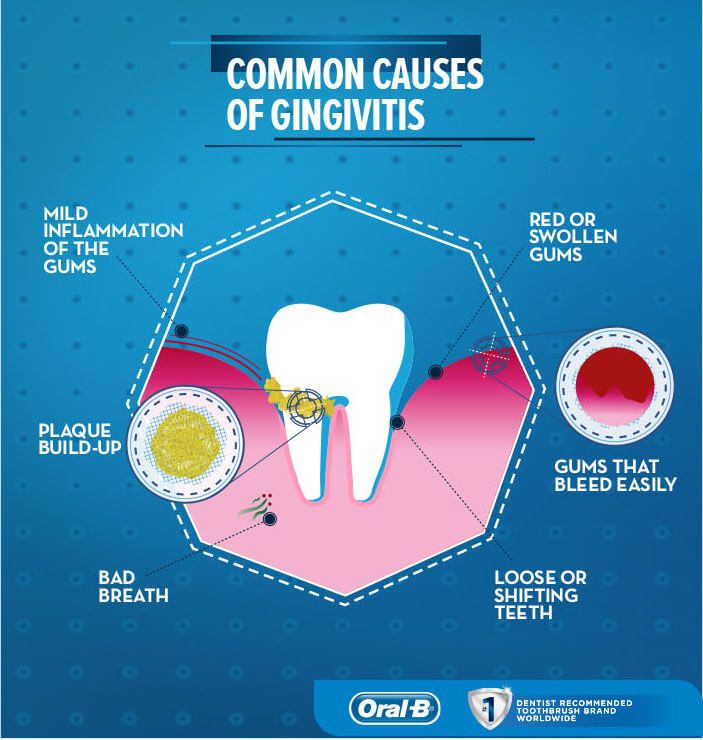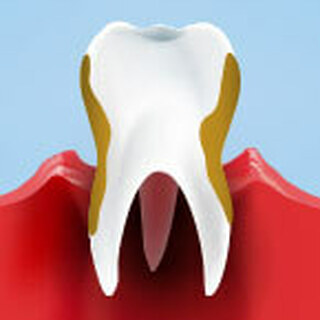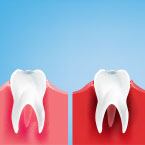WHAT IS GINGIVITIS? SYMPTOMS, CAUSES, AND TREATMENTS

- What is Gingivitis?
- What Causes Gingivitis?
- Gingivitis Symptoms and Signs
- Gingivitis Treatment and Prevention
- Questions About Gingivitis
Gum diseases, medically referred to as periodontal diseases, include gingivitis and periodontitis. At the same time, it is worth knowing that the term periodontal disease refers to the whole spectrum of gum diseases, from mild to more serious, with gingivitis being the mildest stage of the disease and periodontitis being the most serious.
What is Gingivitis?
Gingivitis is an early stage of gum disease caused by the buildup of plaque, a naturally occurring biofilm containing bacteria, on the tissues that surround the teeth. The bacteria in the plaque will cause inflammation which can result in swelling and redness of the gum tissue. If left untreated, gingivitis can develop into a more severe form of gum disease, known as periodontitis, which is a major cause of tooth loss in adults. Gingivitis is often painless, so if you exhibit any signs or symptoms be sure to visit your dental professional for a proper assessment and to determine a course of treatment.
What Causes Gingivitis?
Gingivitis is commonly caused by the buildup of plaque around the gum line. Plaque is a biofilm that is extremely sticky, and colorless to pale yellow in appearance that contains many types of bacteria that build up on your teeth if not removed regularly by twice daily toothbrushing. The bacteria produce acids that attack both your tooth enamel and damage the gums. This damage has the possibility of becoming permanent if left untreated.
The best way to treat gingivitis is to remove excess plaque at a dental office. You should also follow a thorough oral care routine, i.e., clean your teeth more thoroughly, use toothpastes that reduce plaque, and promote gum health. This is important as the most common cause of gum disease is poor oral hygiene, which results in plaque buildup. Moreover, in some cases, just improving oral care habits can make the symptoms of gingivitis disappear without the need for professional treatment. Other causes of gingivitis include hormonal changes, illnesses, smoking, taking certain medications, and genetics.
What are Signs and Symptoms of Gingivitis?
In some cases, gum disease may produce only mild symptoms, with no pain. However, any symptoms should not be underestimated. Failure to treat gingivitis early on can lead to the final stage of periodontal disease, periodontitis, which can lead to tooth loss.
Some symptoms of gingivitis include red, swollen, and bleeding gums in addition to bad breath. When gingivitis progresses to periodontitis, the gums begin to pull away from the teeth, creating small pockets. Bacteria can then become trapped in these pockets, weakening the bone supporting the teeth. If you ignore the signs of gingivitis because you don’t recognize them or because you are worried about seeking care from a dental professional, your condition will get worse. Make sure to see your dental professional immediately if you notice any of these signs and symptoms to receive a proper assessment. If these symptoms persist, it's important to talk with your dental professional to determine the best treatment option for you.

How to Treat Gingivitis?
Your dental professional may recommend a proper examination and determine the level of periodontal disease. This is done with special equipment, such as an x-ray or a dental probe that measures the depth of the pockets around the tooth. When it comes to treating gingivitis, professional cleaning or scaling may be recommended. This procedure is performed in the office and is designed to remove lingering bacteria in the form of plaque. The professional may also prescribe soothing and anti-inflammatory preparations that are applied topically. In addition, he or she should give specific instructions on how to treat gingivitis at home so that the disease is reversed.
How to Prevent Gingivitis
Here are some steps and tips for how to prevent gum disease:
- Brush twice a day with an electric toothbrush to help remove the bacterial plaque from your teeth. The award-winning Oral-B iO Series of electric toothbrushes.
- Be sure to use anti-gingivitis or anti-plaque toothpaste containing stannous fluoride like Crest Gum Detoxify Deep Clean Toothpaste or Crest Pro-Health Advanced Gum Restore Toothpaste to strengthen teeth and neutralize plaque bacteria while promoting gum healing for clinically proven healthier gums.
- Floss at least once a day to remove food particles and plaque between teeth. Pair traditional string floss, like Oral-B Glide Pro-Health Deep Clean Mint Floss with the Oral-B Water Flosser Advanced to help remove plaque bacteria* for healthier gums.
- Rinse thoroughly with an anti-bacterial mouthwash to help fight plaque, gingivitis, and bad breath and get those hard-to-reach places that plaque bacteria can hide in.
- Please note that your gums may continue to bleed for a period of time; however, it is important to keep brushing and flossing. Removing plaque is essential to improving gum health.
- Don’t forget to visit your dental professional every six months for checkups, professional cleanings, and to discuss any concerns or questions you may have.
When it comes to gingivitis, a healthier mouth starts with good oral care habits. Rely on Oral-B for the very best in oral care solutions.
From Oral-B, the #1 dentist-recommended toothbrush brand, worldwide.
Questions About Gingivitis
Q: Who can get gingivitis?
A: The most frequently occurring gum disease is gingivitis, which is quite prevalent. But while almost 80% of adults will experience some symptoms of gingivitis*, that doesn’t necessarily mean it’s inevitable. It’s important to note that occasionally there might be no noticeable pain or apparent signs, leaving people unaware that they have it. That’s another good reason to schedule a regular dental checkup so your dental professional can identify gingivitis early and suggest treatment options if necessary.
Q: Is gingivitis reversible?
A: After a proper diagnosis of gingivitis, it is important to start treating it immediately. Gingivitis is reversible, so visit your dental professional at the first signs of symptoms for a proper evaluation to decide the best course of treatment. They may simply have you update your daily oral hygiene routine to better protect and improve gum health. In fact, a recent study showed the gum health benefits of the following routine, where 100% of gingivitis patients transitioned to a healthy gingival state**:
- Brush teeth at least twice a day with an Oral-B iO Series Electric Toothbrush. Its dentist-inspired round brush head expertly cleans with micro-vibrations to remove more plaque than a manual brush.
- Pair the Oral-B iO with a toothpaste containing Stannous Fluoride like Crest Gum Detoxify, its activated foam formula removes plaque bacteria in hard-to-reach areas to better reverse gingivitis.
- Floss at least once a day to remove more plaque and debris from tight spaces. Oral-B Glide Pro-Health Deep Clean Mint Floss slides up to 50% more easily in tight spaces than other types of floss.
- Swish with a rinse containing Cetylpyridinium Chloride (CPC), like Crest Pro-Health Multi-Protection Mouthwash which helps protect your mouth from gingivitis and plaque with 0% alcohol.
*Helps reduce plaque bacteria and inflammatory components associated with gingivitis, when used as an adjunct to brushing, flossing and regular professional care
**Adam R,1 Grender J,2 Timm H,1 Qaqish J,3 Goyal CR.3 1. Procter & Gamble Service GmbH, Kronberg, Germany. 2. The Procter & Gamble Co., Mason, OH, USA. 3. All Sum, Mississauga, Ontario, Canada. Data on file, 2020. Anti-Gingivitis and Anti-Plaque Efficacy of an Oral Hygiene Routine including Oral-B® iO Oscillating-Rotating Electric Toothbrush, Stannous Fluoride Dentifrice, CPC Rinse and Floss: Results from a 12-week Trial
Source:
069055125946|069055125205|037000469568








